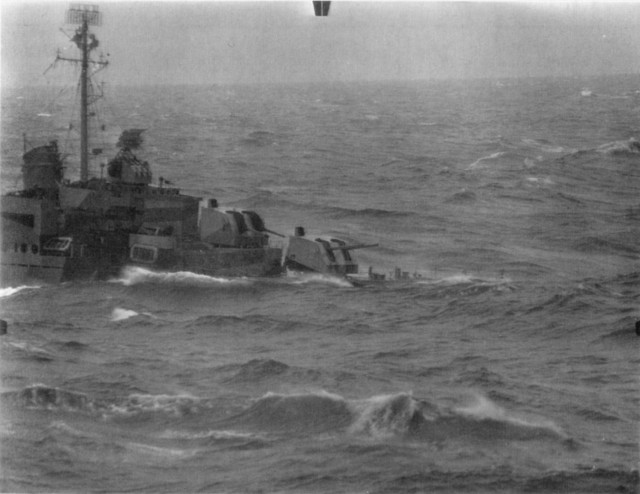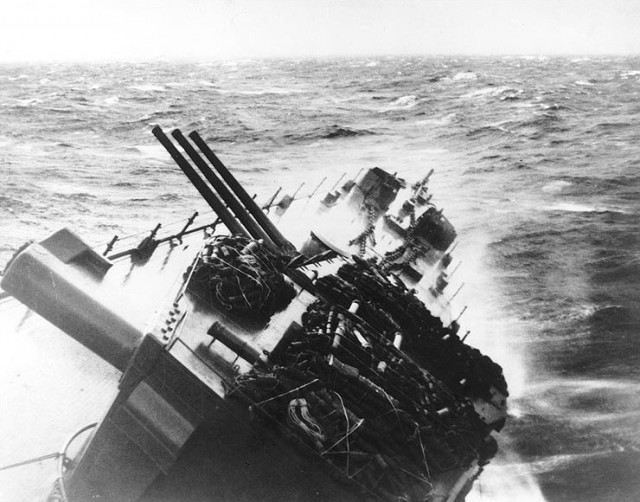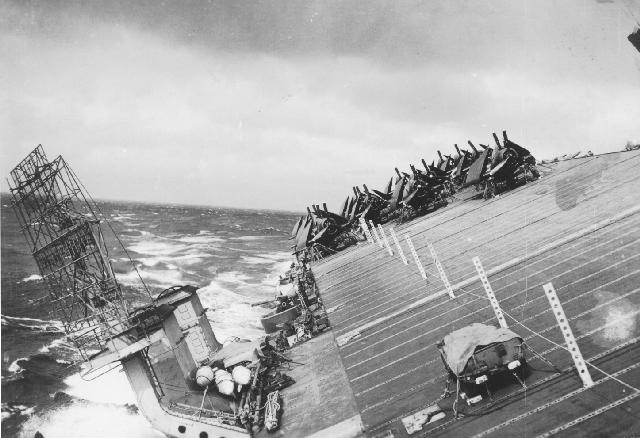The United States Third Fleet was working in the Philippine Sea in December 1944, carrying out air raids on Japanese airfields, when it found itself in the middle of Typhoon Cobra.
The Third Fleet was made up of eight battleships, six light carriers, fifteen cruisers, seven fleet carriers and approximately fifty destroyers. They were returning from the Philippines to refuel their ships; however, this had to be called off when the storm hit them.
Some of these ships experienced sharp rolls of over 70 degrees in the winds that reached 100mph; the Fleet suffered severe damage. Three destroyers (Maddox, Hickox, and Spence) were almost depleted of fuel and so were lighter and more unstable in the rough weather.
A few other destroyers (including the Monaghan and the Hull) had been refitted using over 500 tons of armament and equipment, and so were top-heavy, which also caused issues.

Three of these destroyers (Hull, Monaghan, and Spence) were sunk in the storm; however, the Maddox and the Hickox were able to give themselves greater stability by pumping seawater into their near-empty fuel tanks. This allowed them to ride the storm out.
Almost every single ship in the fleet suffered damage of some kind, mainly to radio and radar equipment, this hampered communication between the Fleet. The Fleet lost 146 aircraft during the typhoon; they were damaged beyond repair or blown into the sea. Nine ships in the fleet suffered damage so severe they had to be sent away to be repaired.

788 men were lost in total from the three sunken ships, sadly only 93 managed to be rescued. Admiral Chester Nimitz talked of the Typhoon’s effects ‘[it] represented a more crippling blow to the Third Fleet than it might be expected to suffer in anything less than a major action.’
An official Navy court inquiry was held on the USS Cascade where Nimitz was present; the Inquiry determined that Admiral Halsey had made an erroneous decision in opting to sail into this typhoon it decided not to proceed with a sanction.
Halsey transferred command of the 3rd Fleet to Admiral Spruance in January 1945 (at which point it was no longer known as the 3rd Fleet but the ‘Fifth Fleet’). This command lasted until May 1945 at which point Halsey regained command. In June 1945 Halsey repeated his decision to sail into a typhoon when he opted to sail into the path of Typhoon Connie. Ships were severely damaged on this occasion, but luckily none lost. They did lose however a total of 6 lives, 75 planes and found severe damage to a further 70 planes.
A second Navy court of inquest was called for, and in this inquiry, a suggestion was made to reassign Halsey, however, Nimitz voiced a recommendation to not go ahead with that action due to the prior outstanding service that Halsey had provided the Navy. Halsey was therefore left in command of the Fleet until all hostilities were over.
